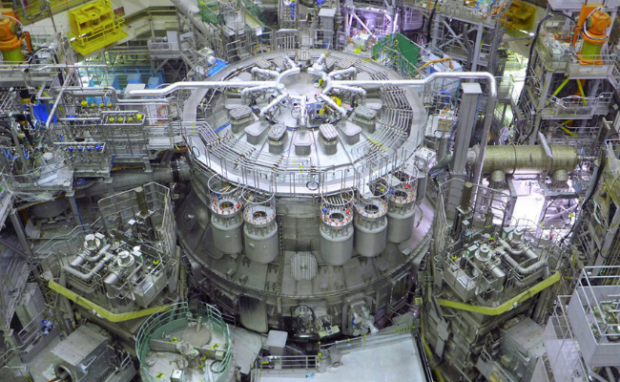US nuclear fusion lab achieves net energy gain
National Ignition Facility (NIF) researchers announced their nuclear fusion reactor achieved repeated “ignition,” also known as net zero or net energy gain. That means their device has produced more energy than it consumes over the last year. As a result, scientists see it as a major breakthrough for creating a new global energy source.
Nuclear fusion fuels our Sun and other stars, so harnessing its power lets us “put the power of the Sun in the palm of our hands.” Consequently, we could provide a near-limitless supply of energy for everyone worldwide. That capability seems to be getting closer to reality, thanks to the NIF’s recent breakthrough.
This article will discuss how this nuclear fusion laboratory achieved net energy gain. Then, I will discuss other recent nuclear power innovations.
How did the nuclear fusion lab make energy?
The NIF project fires 192 laser beams at a frozen pellet of tritium and deuterium, two hydrogen isotopes. This piece is inside a diamond capsule suspended inside a golden cylinder.
The laser beams hit the pellet and cause an implosion fusing the isotopes together. Consequently, they create helium and a tremendous amount of energy.
On December 5, 2022, the nuclear fusion lab started achieving breakthroughs. That was when its fusion reactions generated around 54% more energy than the laser beams.
In other words, it was the first time the facility made more energy than it burnt. On July 30, 2023, the NIF project broke another record by delivering 2.05 megajoules of fusion energy.
In June and September 2023, the NIF made slightly more energy than the laser provided, but not enough to confirm ignition. On the day before Christmas, it made 3.88 megajoules of fusion energy, an 89% increase over the input energy.
You may also like: NASA robot oversees oil rigs for remote testing
Interesting Engineering says the National Ignition Facility was not intended as a power plant. Instead, it’s a research facility to recreate and study the reactions that occur during a thermonuclear explosion.
Also, this laboratory tests how we could achieve nuclear fusion in a controlled laboratory so that we could use it for energy. Many scientists view repeated net energy gain as a new phase for the NIF.
That shows the facility has achieved its goal after 10 years. William & Mary physicist Saskia Mordijck said the NIF’s success has been a “leap of faith” for many. “In that sense, what is important is that scientists say they could do something, and then they actually did do something,” he added.
Other nuclear fusion breakthroughs

The world’s largest nuclear fusion reactor was recently activated on the other side of the world. The European Union and Japan constructed the JT-60SA to confirm the feasibility of fusion as a safe, large-scale, and carbon-free net energy source.
In other words, they want the process to generate more energy than the amount needed to produce it., similar to the US nuclear fusion lab’s achievement.
This device is a six-storey-high machine with a donut-shaped “tokamak” vessel. The Merriam-Webster Dictionary defines a tokamak as “a toroidal device for producing controlled nuclear fusion that involves the confining and heating of a gaseous plasma by means of an electric current and magnetic field.”
The JT-60SA will contain swirling plasma heated to 200 million °C or 360 million °F. It will cause hydrogen nuclei inside to fuse into one heavier element, helium, releasing energy as heat and light.
That will also recreate the process that occurs inside the sun. Sam Davis, the JT-60SA’s deputy project leader, said the device will “bring us closer to fusion energy.”
You may also like: China launches first-ever 4th-gen nuclear reactor
“It’s the result of a collaboration between more than 500 scientists and engineers and more than 70 companies throughout Europe and Japan,” he added. Moreover, EU energy commissioner Kadri Simson said the JT-60SA was “the most advanced tokamak in the world.”
Simson also hailed the initial operations as “a milestone for fusion history.” Moreover, he claimed, “Fusion has the potential to become a key component for energy mix in the second half of this century.”
ScienceAlert says fusion does not pose the risk of nuclear disasters, unlike fission. For example, the 2011 Fukushima nuclear disaster showed how catastrophic the latter can be. Moreover, nuclear fusion produces less radioactive waste than current power plants.
Conclusion
The National Ignition Facility achieved repeated net energy gain with nuclear fusion. In other words, it proved that we could generate energy from this atomic process.
However, the researchers admit their method still has flaws. For example, over 99% of the energy for a single ignition attempt is lost before it reaches the target.
Nevertheless, scientists are optimistic because they’ve figured out the primary variables and how to control them. Check out more digital tips and trends at Inquirer Tech.